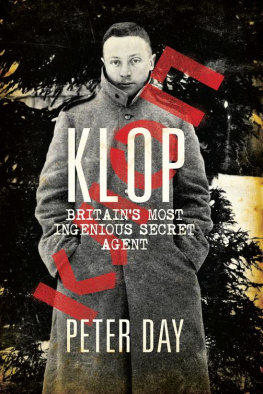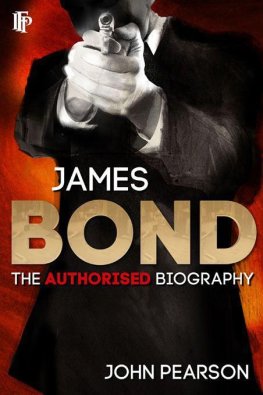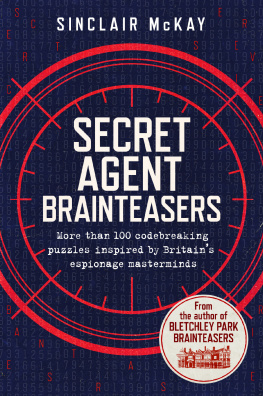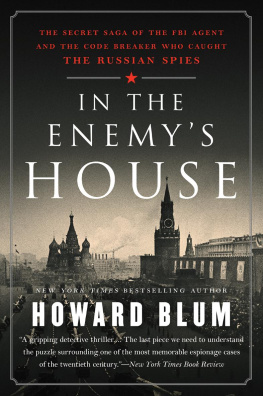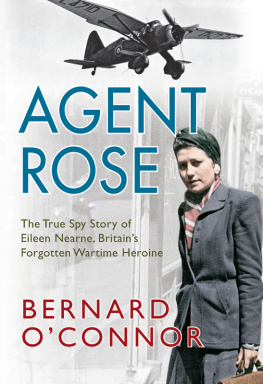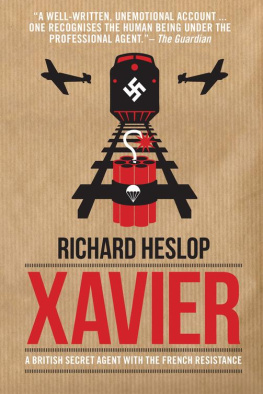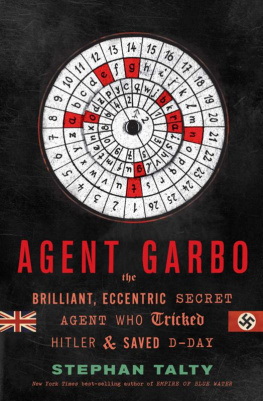W hat started out as a simple task to turn the assorted reports of Klop Ustinovs espionage exploits into a coherent story has escalated into an epic journey from the tropical heat of Ethiopia in the nineteenth century through the Russian Revolution and two World Wars to the icy tundra of the Cold War. As it grew in scale and complexity it became ever more difficult to keep track of the many characters that flitted in and out of the narrative, not to mention the incomprehensible military and intelligence acronyms. To aid navigation a glossary of principal characters and organisations has been included towards the end of this book.
Inevitably much of the preliminary research was done at the National Archives at Kew where the staff were, as ever, patient and knowledgeable. I relied heavily, too, on the resources of the London Library and the British Library and, to a lesser extent, on the Imperial War Museum, Churchill Archives and Cambridge University Library.
I was drawn to the United States by the meticulous investigations of Professor Richard Breitman and the Interagency Working Group who supervised the release of around ten million pages of documents under the 1998 Nazi War Crimes Disclosure Act and distilled them into a single volume of essays. Some former members of the team were among the enthusiastic research advisers and assistants who guided me through a couple of fruitful weeks at the US Archives at College Park, Maryland.
Despite the best endeavours of the language teachers at the Goethe Institute in London, my command of German would not have been adequate to the task without the generous time and effort of Gnter Scheidemann and his colleagues in the reading room of the German Foreign Office archive in Berlin; and likewise Marco Birn and colleagues at the Baden-Wrttemberg state archive in Stuttgart. Thanks also to the licensing department of the archives in Stuttgart and Ludwigsburg for permission to reproduce photographs. Other photos were provided by The National Archives, the Imperial War Museum, Getty Images, Mrs Elizabeth Head, and under Crown copyright from government records. The publishers, Macmillan, authorised the use of extracts from Klop and the Ustinov Family by Nadia Benois.
My thanks to all those at Biteback who contributed to the books publication, particularly commissioning editor Mick Smith and editors Hollie Teague, Olivia Beattie and Victoria Godden. Various individuals weighed in with advice and support during the research stage, among them Ustinov family friends Cathy Bazley, Emily Beanland, Owain Hughes, June Lewis-Jones and Liz Head, ne Brousson, who was incredibly generous with her time and hospitality. Special thanks are due to Klops grandson, Igor Ustinov, for permission to use previously unseen sketches from Nadia Benoiss notebooks and for his encouragement and thoughtful insights.
All of these people have helped me get closer to the truth about an elusive subject but cannot be held responsible for errors and misapprehensions. It has always to be borne in mind that the original source for much of what follows was two world champion raconteurs, Klop and his son Peter, and they may, just occasionally, have been guilty of that failing so often attributed to journalists not letting the facts get in the way of a good story.
N obody wants to be known as a bedbug. Except Klop Ustinov. The Russian diminutive was more fun than doleful Jona, the name his parents gave him. He looked the part: only 5ft 2in., his head slightly too big for his body; his protruding grape-green eyes shamelessly undressing any attractive woman who crossed his line of vision. Whats more, he shared the tiny parasites capacity to turn up, not exactly uninvited but quite surprisingly, in more than a few of their beds. He was a real-life spy with more lovers than James Bond. Like Bond, he was a man who appreciated fine food and wine. But he was no 007, licensed to kill. Codenamed U35, his mission was to beguile and confuse.
Bonds creator Ian Fleming and Klop Ustinov were contemporaries. Fleming masterminded subversion in Spain and Portugal for naval intelligence while Klop was intriguing with MI6 double agents in Lisbon during the Second World War.
Sir Dick White, the only man ever to be director of both MI5 and MI6, nurtured Klops career from its earliest days. He described him as his best and most ingenious operator. The problem is to explain how, and why, he earned such an accolade.
Several other countries had better claim to his loyalty. Money and notoriety were not his motives. He was never rich, usually lived beyond his means, and would rather die than cash in on the many secrets he harboured. He left no memoirs. Yet to all appearances he was neither especially secret nor even discreet. His battlegrounds were the social salons of Europe; his disguise the showmans talent to entertain and amuse; his most potent weapon the spellbinding art of the storyteller: all the qualities which shaped his more famous son Peter Ustinov as an actor, director and raconteur.
Klops friend and fellow MI6 officer Nicholas Elliott might have been thinking of him when he described the attributes needed to succeed:
They will be personalities in their own right; they will have humanity and a capacity for friendship; and they will have a sense of humour which will enable them to avoid the ridiculous mumbo-jumbo of over secrecy.
He explained that it was all about gaining other peoples confidence and occasionally persuading them to do things against their better judgment.
Peter Ustinov said of his father that he regarded life as a superficial exercise, an extent of thin ice to be skated on, for the execution of arabesques and figures of fun. Klop would have agreed with Cecil Rhodes that to be an Englishman meant that the first prize in the lottery of life had been won. Rhodes was a commanding figure of the British Empire. For Klop, the lottery of life had its origins in two other imperial dynasties Russia and Ethiopia.
*
On a plateau 3,900ft above the Bechilo valley, the great brass cannon called Sebastopol gave out a roar that could be clearly heard two miles away. It was the most powerful weapon in the armoury of the Emperor Theodore, modelled on the Russian guns that faced the Charge of the Light Brigade at Balaclava.
The fearsome, unpredictable despot had conquered his rival tribes and ruled over all the fabulous lands of Abyssinia, better known now as Ethiopia. He was the latest embodiment of an uncertain lineage which traced its roots to the Biblical King Solomon and the Queen of Sheba. He had heard of that terrible slaughter in the Crimea and now believed that he, too, could strike fear in the red-coated soldiers of the British Army gathered on the plain before Magdala, his impregnable mountain fortress, towering 9,000ft above sea level.
In January 1868, 10,000 British and Indian soldiers and 30,000 support staff and hangers-on landed at Annesley Bay on the Red Sea. They were under the command of Lieutenant General Sir Robert Napier, veteran of the Sikh Wars, the Indian Mutiny, the North West Frontier and the second Anglo-Chinese War. He didnt stint on equipment. There were forty-four Indian elephants, 2,538 horses and 16,022 mules to carry his men plus 300,000 tons of arms and supplies. They built their own railway and negotiated safe passage with the emperors enemies.
The vanguard of fighting men made an extraordinary forced march across 400 miles of uncompromising terrain. They crossed the Bechilo valley, labouring up the side of the ravine through intense heat with insufficient water, and now stood implacably before Magdala, come to right a tiny wrong. Theodore had insulted Queen Victoria, whose dominions extended beyond his imagination.
He had previously hoped to be friends with Her Majesty and made diplomatic overtures. She had responded with a gift of silver embossed pistols. But when the British Foreign Office failed to reply to his overtures with sufficient alacrity or respect he took their representative hostage. Charles Cameron spent more than four years in captivity. He was joined by the emissary sent to negotiate his release, Hormuz Rassam, and by missionaries, European artisans and adventurers, and various princelings of rival tribes. The princes were hostages against the continued subservience of their tribes. Their lives depended on Theodores murderous black moods, often occasioned by strong drink. Among the European hostages was Moritz Hall, a former Polish soldier, a Jew who had converted to Christianity and an opportunist who had agreed, under duress, to build Theodores great cannon.

